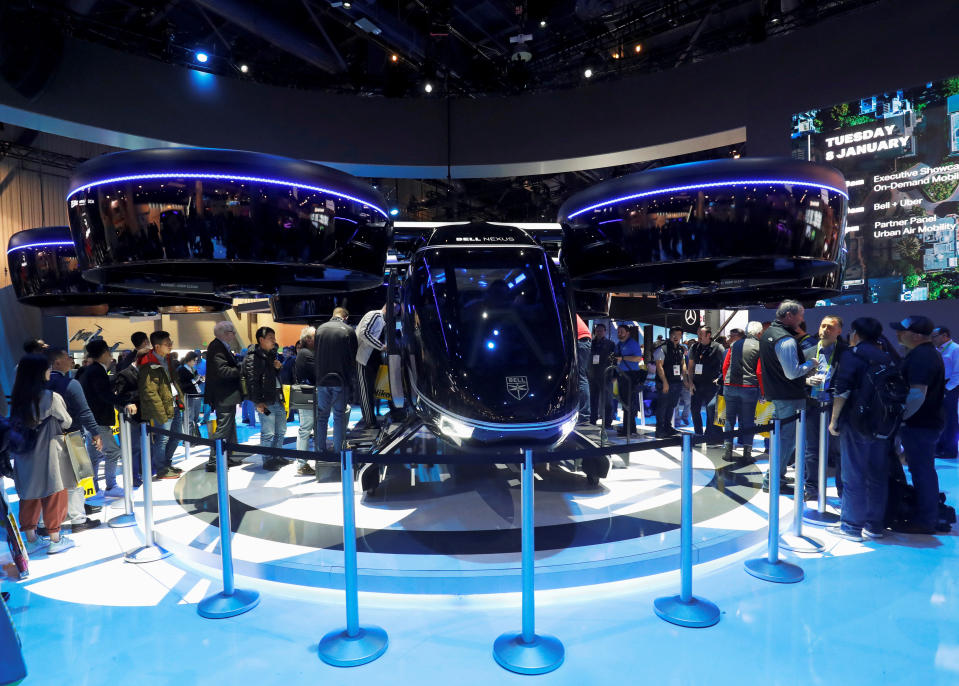The drones of CES 2019 aren’t all in the air

LAS VEGAS—This year’s CES has brought about a welcome development in self-propelled robots: drones without the usual droning soundtrack.
That’s not because the electronics gathering features any fewer unmanned aerial vehicles lifted by spinning rotors that emit a characteristic and annoying whine.
That racket hasn’t gone anywhere, as heard from such models as the pocket-sized AirSelfie 2 (light enough to evade the Federal Aviation Administration’s drone-registration requirements) and Ataraina’s Flying Magic Cleaner (a sort of drone Roomba that sweeps up dust particles electrostatically).
But the drones that interested me were not those small flying robots.
Drones that go into the drink
Underwater drones have been around for a while for those looking to capture their visits to coral reefs and schools of fish, but at this year’s exhibits they came a lot closer to parity with the flying sort.
Some are just for fun. RoboSea’s Bionics-RoboFish swims by flapping a tail fin, just like an analog, organic fish. It includes a 4K camera and offers two hours of battery life for $799. And with its resemblance to the clownfish title character of “Finding Nemo,” it is on the cute side.
Others aspire to more professional applications. The Navatics Mito underwater drone uses four thrusters to keep itself in one spot, illuminates its surroundings with a pair of 1000-lumen LEDs, and can operate for four hours on a charge. It’s correspondingly more expensive, at $1,499.
PowerVision’s PowerRay drone is still more expensive, at $1,899 in its high-end configuration. But that may help you catch your dinner: It includes a sonar fish-finder and can drop bait remotely.
The biggest drones of all
CES also includes two devices you might not think of as drones, but which help illustrate how autonomous-mobility technology can make things easier for a human operator instead of replacing that person.

At one end of the Las Vegas Convention Center, a mockup of the Bell Nexus had a large crowd gathered Thursday afternoon. That helicopter manufacturer is building this four-passenger, vertical-takeoff vehicle for Uber’s planned air-taxi service. It will use its six ducted fans to take off and land vertically, then rotate them forward for level flight at up to about 170 miles an hour over distances of up to 170 miles.
Bell estimates that the Nexus will see its first flight in 2025 or 2026—five years later than the 2020 debut Uber predicted last year for the air-taxi service. It will initially have a pilot, but this Textron (TXT) subsidiary aims to reduce that person’s role to that of an observer as it proves out the Nexus’s autonomy.
At another end of the convention center, first-time CES exhibitor Deere (DE) had brought a combine to the show. That bright-green S770, starting at $477,402, was not there to remind CES attendees of how their food got to their plates but to remind them of much technology goes into a piece of agricultural machinery.
Specifically, this and other Deere tractors use an augmented “real-time kinematic” flavor of GPS for positioning accurate to within 2.5 centimeters and autonomous operation. The combine drives itself through the field for precise harvesting, letting farmers take their hands off the wheel in the cabin and instead monitor the process while taking care of other business.
A machine that drives itself? The S770 is also a drone, just one with tires that approach the size of a compact car.
More from Rob:
Your TV could soon have these features that are better than 8K
How your TV or broadband bill might creep up in the new year
2 toxic story lines from Facebook won’t go away in 2019
Facebook wants to give you a way to fight having your posts taken down
Google Maps will now help you find Lime scooters
Microsoft is asking the government to regulate the company’s facial recognition technology
Email Rob at rob@robpegoraro.com; follow him on Twitter at @robpegoraro.

 Yahoo Finance
Yahoo Finance 
